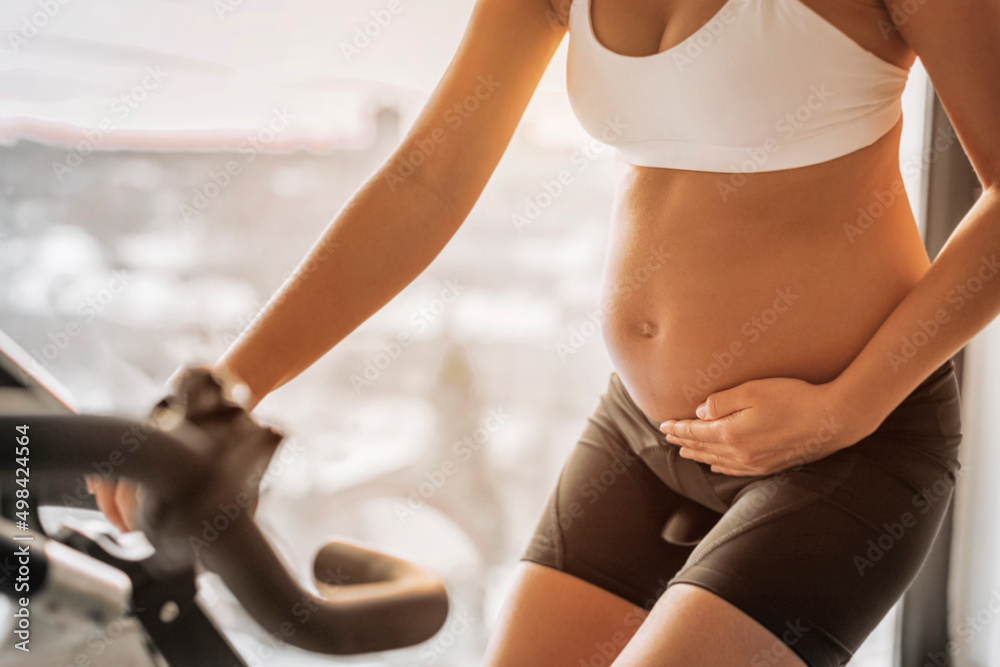Biking While Pregnant: Safe Tips and Benefits

Is biking while pregnant safer? If you’re wondering whether you can continue cycling, you’re not alone. Before you get the green light from your healthcare provider, it’s important to consult them to ensure it is safer for you to ride. This article will dispel common myths, highlight the benefits, and provide practical tips to keep you riding safely throughout your pregnancy. Key Takeaways Cycling during pregnancy is generally safer and offers cardiovascular benefits, but consulting a healthcare provider is crucial to tailor activities to individual needs. Staying active can help alleviate common pregnancy discomforts and boost mood, while safety precautions and modifications to bike setup are important as pregnancy progresses. Listening to your body and adapting your routine based on your comfort and energy levels ensures a positive cycling experience throughout pregnancy and beyond. Understanding the Basics of Biking While Pregnant Cycling is generally considered a safer, low-impact cardiovascular exercise, which makes it suitable for most pregnant women. However, approaching biking during pregnancy with caution is advised. Consult your healthcare provider before starting or continuing a cycling routine to ensure it’s safer for both you and your baby. This consultation can help tailor your cycling activities to your specific needs and capacities, especially considering that personal circumstances like morning sickness may affect your ability to ride. Using a mountain bike during pregnancy can provide added stability and a more comfortable upright position, which is beneficial as your body undergoes changes. Many pregnant women worry about the safety of cycling during early pregnancy, particularly due to concerns about miscarriage or the effects of physical activity on the embryo. A pregnant woman can expect to encounter a range of opinions and advice, some of which might be extreme or unsolicited. The key is to stay informed and listen to your body’s signals. Remember, long road bike tours or competitive cycling might not be advisable during pregnancy, so understanding and respecting your limits is crucial. Benefits of Cycling During Pregnancy Cycling offers numerous cardiovascular benefits that can be particularly advantageous during pregnancy. Regular biking helps enhance heart function and circulation, which is vital for both mother and baby. Managing weight gain during pregnancy is another significant benefit, as it can help lower the risks of conditions such as gestational diabetes and hypertension. In addition to physical benefits, cycling can alleviate common pregnancy discomforts such as backaches and swelling in the legs. By strengthening muscles and improving blood flow, you can enjoy a more comfortable pregnancy. Furthermore, the endorphins released during physical activity like cycling can significantly boost your mood and improve sleep quality, reducing anxiety and depression. For many pregnant women, maintaining a consistent cycling routine can be a wonderful way to stay active, enjoy the outdoors, and manage stress. Whether you prefer cycling outdoors or using a stationary bike indoors, the key is to find a routine that works for you and supports your overall well-being. Improves Cardiovascular Health and Reduces Risk of Gestational Diabetes Cycling during pregnancy is a fantastic way to boost cardiovascular health and reduce the risk of gestational diabetes. Engaging in regular physical activity, such as cycling, can significantly improve insulin sensitivity and glucose metabolism, which helps in lowering the chances of developing gestational diabetes. Additionally, cycling can help manage blood pressure and enhance overall cardiovascular health, which is crucial for both the mother and the developing baby. The American College of Obstetricians and Gynecologists (ACOG) recommends at least 150 minutes of moderate-intensity aerobic exercise per week, such as cycling, to promote a healthy pregnancy. By incorporating cycling into your routine, you’re not only supporting your heart health but also setting a strong foundation for a healthy pregnancy journey. Enhances Mood and Reduces Stress Cycling during pregnancy can be a wonderful way to enhance your mood and reduce stress. Physical activity, including cycling, triggers the release of endorphins, often referred to as “feel-good” hormones, which can help alleviate symptoms of anxiety and depression. Many pregnant women find that cycling provides a sense of freedom and independence, which can be particularly uplifting during a time when physical changes might feel restrictive. The rhythmic motion of cycling and the opportunity to enjoy the outdoors can help you feel more connected to your body and better prepared for the physical demands of motherhood. Embrace the joy of cycling and let it be a source of mental and emotional well-being throughout your pregnancy. Supports a Healthy Weight Gain During Pregnancy Maintaining a healthy weight gain during pregnancy is essential for a smooth pregnancy and postpartum recovery, and cycling can play a key role in achieving this. Regular physical activity, such as cycling, helps manage weight gain and reduces the risk of excessive weight gain, which can lead to complications during pregnancy and childbirth. The American College of Obstetricians and Gynecologists (ACOG) recommends that pregnant women aim to gain 25-35 pounds during pregnancy, and cycling can help you stay within this range. By incorporating cycling into your routine, you’re supporting a healthy weight gain that benefits both you and your baby, ensuring a healthier and more comfortable pregnancy experience. Safety Precautions for Pregnant Cyclists Safety is the top priority when cycling during pregnancy. While biking is generally safer, taking specific precautions can help ensure a secure and enjoyable experience. Mountain biking, although thrilling and physically beneficial, presents significant dangers due to uneven terrain, increasing the risk of falls or injuries during pregnancy. Pregnant women should avoid pushing their limits or trying to break records. Instead, focus on moderate, steady rides that prioritize comfort and safety. If at any point you no longer feel safer or comfortable while riding, it’s important to stop immediately and reassess. Outdoor cycling, especially on rough terrain, can pose higher risks of falls, which could lead to abdominal trauma. To minimize these risks, consider transitioning to a stationary bike indoors after the first trimester. Always wear a well-fitting helmet and stay within cell service areas, carrying a phone in case you need to call for help. Proper cycling


